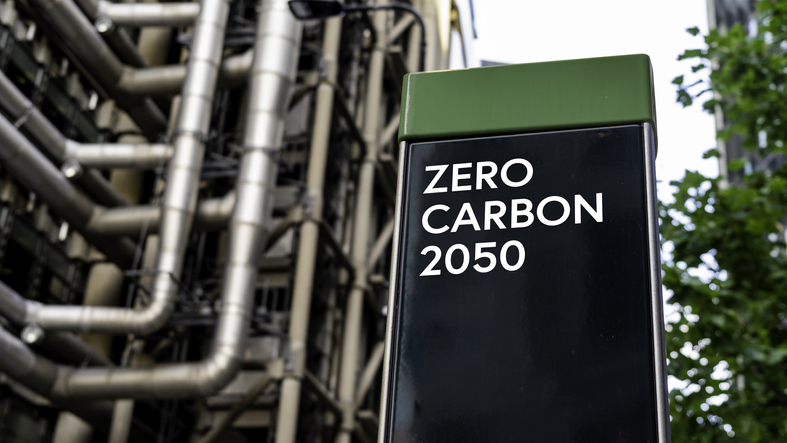The Net Zero ambition, solemnised by Westminster legislators, refers to the government commitment to ensure by 2050, the UK reduces its greenhouse gas emissions by 100 per cent from 1990 levels.
The road to Net Zero is not only going to be a tough journey walk but it is also going to create quite a havoc on high streets.
From April 1, renting commercial spaces with an energy efficiency rating of E or below has been banned, thereby leaving around 8 per cent of all commercial stock, equating to 10,000 commercial spaces in London alone, obsolete. And this is just the start.
All buildings have an energy performance certificate (EPC) that gives owners and renters an idea of how much it will cost to heat and light a property, as well as its CO2 emissions. Properties are given a rating from A to G and must be rated every 10 years.
Britain introduced EPCs under EU regulations in 2007. However, it is being alleged that what was originally introduced as a measure to give buyers a better idea of running costs is now being used as a yardstick to force owners to upgrade their properties.
The Minimum Energy Efficiency Standards (MEES), established in The Energy Efficiency (Private Rented property) (England and Wales) Regulations 2015, require that landlords granting a new lease of a commercial premises must hold an energy performance certificate (EPC) with a rating of E or above, unless they have registered a valid exemption. Commercial properties with an EPC rating of F or G were considered “sub-standard”.

From April 1, new laws have come into force that bans landlords from renting commercial spaces with an energy efficiency rating of E or below. Further, the government intends to ban all commercial properties from being rented out unless they are assessed as having a minimum energy performance rating of C by 2027, and B by 2030.
Although a move to a minimum EPC rating of B is still under consideration and there is currently no legislation in place to enforce this, industry observers strongly believe an announcement is imminent.
The scale of such a measure can be ascertained by the fact that in London alone, only around 23 per cent of all offices are rated A+, A or B, implying most landlords will have to spend money doing up their properties.
Furthermore, landlords that let a sub-standard property (without a registered valid exemption) will be liable to two significant penalties- a financial penalty and a publication penalty. The financial penalties that can be imposed are for letting a non-compliant property for a period of less than three months – a fine of 10 per cent of the rate-able value with a minimum fine of £5,000 and a maximum of £50,000. For letting a non-compliant property for a period of more than three months, a fine can be imposed of 20 per cent of the rate-able value with a minimum fine of £10,000 to a maximum of £150,000.
It is likely that the costs which would be incurred in making the required improvements to make the premises MEES compliant could be very quickly outstripped by the potential penalties involved in not making them.
Costly Affair
According to Savills estate agent, the expected energy standards of minimum B EPC rating will make 91 per cent of all retail space including high street stores and shopping centres across UK city centres un-lettable by 2030,if urgent and costly actions are not undertaken to rectify.
What sounds like a feasible goal to achieve and that too in good long seven years from today, is going to be a tricky one. Experts are claiming that achieving a rating of E is rather doable, but to get a B or an A level will be a different ball game altogether.
Small changes can boost a building to an E rating, such as motion activated lights and better thermostat controls. However, for upgrading to B or above, massive investment for renovation will be involved like solar panels on roofs, replacing old heating systems with heat pumps, restructuring the façade of buildings to add more windows, improving ventilation and adding insulation- something which smaller owners will struggle to achieve.

Lifting a building from an EPC rating of C to A costs between £26-£40 per square foot on average, according to Savills. It also adds that a 10,000 square foot space would mean costs of up to £400,000.
Overall, it will cost between £55 billion and £90bn to upgrade retail stock across Britain, with around £10bn needed in London alone, Savills estimates.
Noteworthy here is majority of high street stores across the UK are owned by smaller landlords. Reports suggest that bigger owners only account for around 40 per cent of national stock while the rest are owned by smaller and medium-pocket sized owners.
While owners with big portfolios may have the capacity to upgrade their space, many smaller players are most likely to struggle or even fail in this process. In other words, it will present a choice between either undertaking the required expensive renovation work or trying to sell-up.
It is feared that many properties, particularly in older parts of North England, will become ‘stranded assets’- unable to be let as they are but also unable to achieve high enough rents to make investment worthwhile. In some cases, owners might give up altogether and consider knocking down the premises.
Small Steps
According to a report from The Federation of Small Businesses in 2021, 37 per cent of small businesses want to do more to achieve net zero and sustainability for their business.
According to Llloyds Banking Group, reaching net zero is among top five litany of challenges facing UK’s small and medium enterprises. Its report states that 93 per cent of SMEs believe sustainability challenges are important, and 83 per cent say it’s become more important to them over the last year, notwithstanding higher energy costs and the continuing impact of Brexit.
This is indeed a positive outlook to look at things though it is no secret that SMEs will face challenges in their journey to curb carbon emissions. Insufficient budget and high cost sare identified as the biggest challenges.
Published on Jan 13 by MP Chris Skidmore, the Mission Zero report too recognizes that there are barriers for small businesses in delivering net zero, including access to finance, feasibility, signposting to support and industry role models.
More funding, resources, and support is needed to help SMEs prepare for net zero and take sustainability action in their business, maybe in the form of incentives, tax breaks, and guidance.

The Review also recommends launching the support as soon as 2024 so businesses can start investing in the transition to net zero. It also recommends that the government develops an ‘SME role model programme’ to offer mentoring for micro-businesses and the self-employed by 2023.
This presents an opportunity here for small businesses to grab, particularly shop owners: electric vehicles charging stations.
Electric vehicles and other ‘zero emission vehicles’ are going to become the norm as the sale of new petrol and diesel vans is phased out by 2030. This is something that the government has already committed to in their Transport decarbonisation plan. As the deadline gets closer, the government may come up with grants and schemes to push more charging points across the country- something to look out for if space allows.
If these (and other measures) could be counted as Net Zero “credits”, it could potentially help retailers and forecourts to thrive. Financing and funding options are available for businesses looking to invest in decarbonisation solutions, such as the government’s Public Sector Decarbonisation Scheme, though that does not much help private enterprises.
The Welsh parliament is discussing the introduction of variable Land Transaction Tax (LTT), also referred to as Energy Saving Land Transaction Tax Incentive, with regard to private dwellings. This would work by recognised improvements in the home’s energy efficiency and would reduce the LTT paid. If something could be developed for small businesses as well, it could help to offset the burden of investment needed to comply with Net Zero burdens.
Long way to go
The Net Zero Strategy laid out a sweeping series of measures to meet the UK’s legally binding 2050 net-zero goals, including backing for a large nuclear power plant and a mandate on electric car sales. However, the plan and its implications are coming under the scanner as things appear a bit more theoretical and less practical for now.
With budgets tightening and prices rising as a Bank of England-predicted recession looms, it is imperative that shop and other small business owners consider MEES compliance in their financial planning and ensure they do not let it fall down the priority list.
Only six countries have passed laws like the UK’s, establishing compulsory net zero targets: Sweden (2045 deadline), France, New Zealand and Denmark (2050). Net Zero legislation has been proposed but not passed in the EU, Spain, Chile and Fiji. The UK was far out in front as the first G7 nation to impose such carbon penalties on itself.
Many other countries have set targets, most at 2050 (Norway is aiming for 2030) but are yet to propose or pass legislation formalising these into law. The only countries which are currently net negative are Bhutan and Suriname. The world’s biggest and most important polluters- specifically China, India and USA have not thought it necessary to place their economies in jeopardy despite issuing much greater carbon damage than Britain.
Some experts have already described the UK’s draconian and self-imposed Net Zero untimatum as a “as a disaster waiting to happen”. It constitutes a further penalty on high street businesses, adding to the insult of already stratospheric fuel bills.
And the clock has already started ticking.







 To use this website you must be aged 18 years or over. Please verify your age before entering the site.
To use this website you must be aged 18 years or over. Please verify your age before entering the site.










